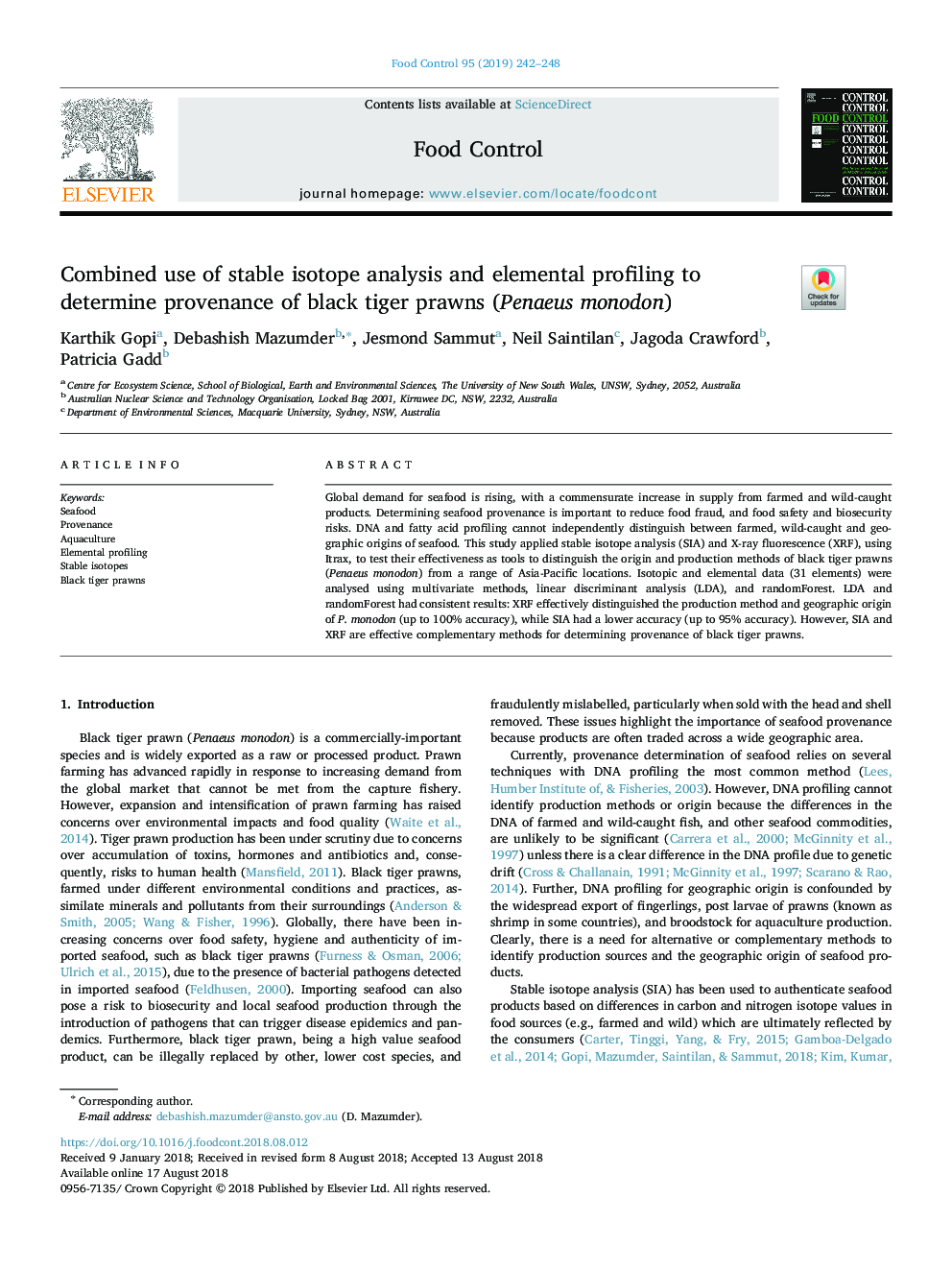| Article ID | Journal | Published Year | Pages | File Type |
|---|---|---|---|---|
| 8887664 | Food Control | 2019 | 7 Pages |
Abstract
Global demand for seafood is rising, with a commensurate increase in supply from farmed and wild-caught products. Determining seafood provenance is important to reduce food fraud, and food safety and biosecurity risks. DNA and fatty acid profiling cannot independently distinguish between farmed, wild-caught and geographic origins of seafood. This study applied stable isotope analysis (SIA) and X-ray fluorescence (XRF), using Itrax, to test their effectiveness as tools to distinguish the origin and production methods of black tiger prawns (Penaeus monodon) from a range of Asia-Pacific locations. Isotopic and elemental data (31 elements) were analysed using multivariate methods, linear discriminant analysis (LDA), and randomForest. LDA and randomForest had consistent results: XRF effectively distinguished the production method and geographic origin of P. monodon (up to 100% accuracy), while SIA had a lower accuracy (up to 95% accuracy). However, SIA and XRF are effective complementary methods for determining provenance of black tiger prawns.
Related Topics
Life Sciences
Agricultural and Biological Sciences
Food Science
Authors
Karthik Gopi, Debashish Mazumder, Jesmond Sammut, Neil Saintilan, Jagoda Crawford, Patricia Gadd,
